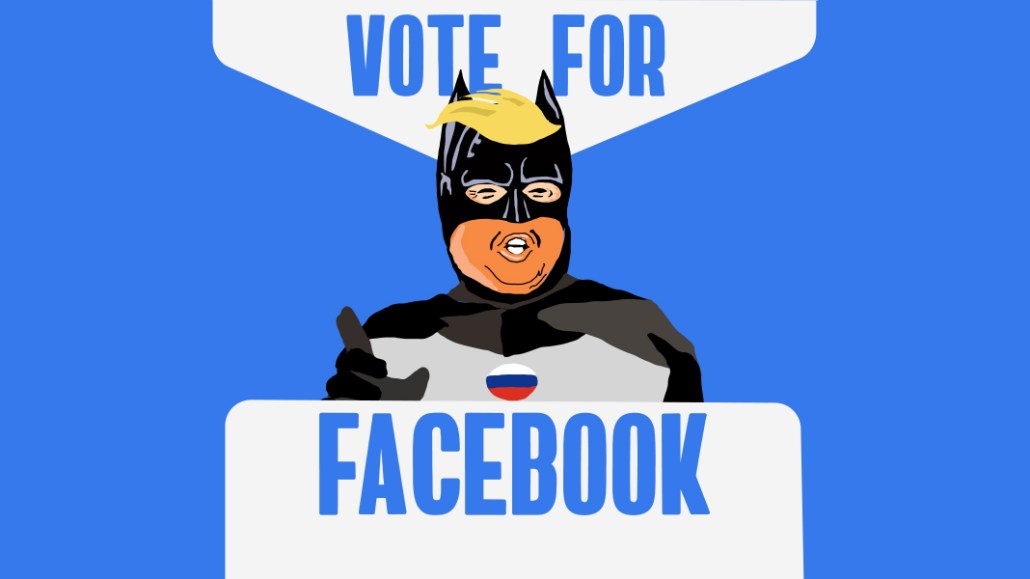‘Digital is the testbed’: Why the 2020 election is focused on online advertising

The 2020 presidential election has not only stirred up a new debate about Facebook’s role in political advertising but called into question the way candidates will advertise — and if this will be the election cycle where digital dominates over television.
It’s certainly true that more dollars are currently being spent on digital advertising. In September, presidential hopefuls had cumulatively spent $60.9 million on Facebook and Google ads compared to $11.4 million on television ads, according to an analysis by the Wesleyan Media Project. And the flurry of digital ads on Google, Facebook and YouTube from President Trump has made clear how important ads on those platforms appear to be for this election cycle.
But media buyers and digital analysts don’t believe the death of the political TV ad is upon us. Instead, they see the increased use of digital ads now by 2020 candidates — especially by President Trump — as using digital advertising as an online focus group of sorts.
“What we’re seeing now is that digital is the testbed, the momentum-gatherer for these candidates and these campaign platforms,” said Alex Funk, vp of strategic development at 3Q Digital. “We’re going to see a lot more TV as we get closer, but until then, digital strategists will have candidates diversify across a number of different platforms.”
The digital ads serve as a quick and relatively cheap way for candidates to test out campaign messages, platforms and even a myriad of creative executions for those ads to see what works and what doesn’t. The feedback from voters online from those digital ads can then be used to craft the television campaigns, which typically flood the airwaves six to eight weeks before Election Day, and even help presidential hopefuls figure out where they need to spend more time with voters.
“It’s a data capture game,” said Nick Venezia, managing director of Social Outlier, a digital shop that has worked on digital advertising for political campaigns. “You have to start telling a story with messaging people can get behind now so that people will buy it later.”
The shift to digital advertising in politics has been happening over the last decade — media buyers and digital strategists cite President Barack Obama’s use of Facebook ads in 2008 as a turning point — but digital spending is expected to reach unprecedented levels during this election. Overall, Kantar predicts that $6 billion will be spent on paid advertising during the 2020 election, with 20% or $1.2 billion going to digital, 53% or 3.2 billion going to broadcast television and 20% or $1.2 billion going to cable television. All told, television will account for 73% of the political ad spending in 2020 versus the 20% expected on digital, per Kantar.
“There’s just more spending in general,” said Carat’s svp of strategy and head of insights, Haley Paas. “It’s not even an election year, and we’re already seeing unprecedented levels of spending for a presidential election the year before. So, people are going to get more and more creative with the things that they do in order to stand out, especially looking at owned, earned and paid in order to drive action like we’re seeing Trump do already.”
Digital experimentation
President Trump is testing various messages and creative formats on platforms like Facebook, Google and YouTube, with dozens of variations for each ad, according to a recent report by The New York Times. This ability to experiment with messaging, see reactions in real-time and tweak as needed is part of the reason why presidential candidates are spending more on digital ads now. The digital ads can serve as an online focus group not only showing candidates what works and what doesn’t with those exact ads, but it can give them a trove of data to refer to later in the election cycle to see what kind of stories resonate with voters.
For example, on Twitter on Oct. 9, Team Trump ran two different versions of the same ad. While the copy was the same, the font and overall design of both ads were quite different. One had a picture of President Trump waving with a light blue background and an overlay of the flag in white with the text, “Do you approve of President Trump? Take the survey.” The second featured a picture of President Trump speaking with a crowd behind him, the color scheme of the photo much darker than the first ad.
Algorithmically, candidates benefit from experimentation. “The more messages you put out the better your campaign does,” said Matthew Rednor, founder and CEO of Decoded Advertising. “We’re seeing that for clients there’s a tipping point where actually once you’re over five messages, once you’re in the 50-to-60 range, your CPAs start to drop and your ads start to perform better. Also, TV is not an agile enough channel to allow you to put out that many messages.”
Feedback loop
The feedback candidates get from digital advertising, especially on social platforms will help identify the messages to promote and the areas to target more heavily. Obviously, the ability to segment those messages to different groups as well as gain real-time feedback that candidates get makes digital advertising more attractive now. But it also helps in getting people to follow a call to action much more easily than on television.
“When you’re working with limited funds, you’re trying to get the most bang for your buck,” said Paas. “If you’re looking to get donations, support and drive a call to action, we know it’s a lot harder to do that immediately through television, whereas with the Facebook ad, you click and you’re right on a page to donate. So it’s much more of a seamless experience from an audience perspective and probably has a much higher ROI for them from a donation.”
Trump, in particular, likely has a better metric than most candidates for what works and what doesn’t with paid advertising, as the president uses much of those ads to drive voters to buy campaign merchandise. While other candidates hawk merchandise, they don’t seem to use as many of their ads to do so.
“That Trump is selling [merch] off his ads gives him a real feedback loop that is the closest signal that we’ll have to seeing intent to vote versus any other signal,” said Rednor. “People don’t vote for a long time. A like, comment, share, that doesn’t necessarily translate to the polls but that he’s connecting his advertising to commerce, which is how you would with any other brand, he has a real feedback loop to see if people are actually going to buy his gear and figure out which messages will move people to take action.”
It’s not all paid
But how candidates experiment with messages online isn’t always through paid executions. With tighter budgets until the Democratic nominee is named next July, some Democratic hopefuls are using earned and owned strategies to stand out online. For example, Bernie Sanders has used celebrities like rapper Cardi B and unexpected appearances like on Joe Rogan’s podcast to get the word out online. Meanwhile, Elizabeth Warren has taken nearly 70,000 selfies with fans and Andrew Yang held a 10-hour Ask Me Anything session on Reddit.
“What we’re seeing now is the media strategists on these campaigns are really understanding the power of paid, owned and earned working together,” said Paas.
Using earned and owned strategies to find out what appeals to voters not only helps inform the paid strategy now but will come in handy once the Democratic nominee is named. While Democratic hopefuls aren’t spending as much digitally on paid ads as President Trump, buyers and analysts believe that spending will increase once there are fewer candidates in the field. There will likely be a dramatic increase in digital ads from the Democrats expected next July following the announcement of the Democratic candidate at the Democratic National Convention.
“Right now, it’s very segmented,” said Venezia. “Each candidate is picking their own media buyer or agencies. We aren’t yet seeing the whole weight of the Democratic party. Once the Democratic candidate is named, all the big guns will come out to play in digital. Then they can afford it. It hasn’t yet become the collective of media buyers that it will be.”
Television comes later
Another reason digital is currently beating out television is simply due to timing, as it’s still very early in the election cycle. Typically, much of the spending on broadcast television is done six to eight weeks before an election, according to a television expert who said that early in an election cycle it’s expected that campaigns will spend more on digital than television. They added that as the election nears more dollars will go to TV.
“There is pretty decent investment in digital channels already,” said Shann Biglione, evp of Americans and global strategy at platformGSK. “Growth is there but not a tipping year. You can’t reach everyone with Facebook. You can still reach more people with TV, and that remains an important consideration.”
More in Marketing

AI screenings, budget cuts, and burnout: What’s really behind advertising’s hiring disconnect
The job market has never been easy to navigate. But between tightened marketing budgets, agency consolidation and economic headwinds, the job market is as convoluted as ever.

Cannes Briefing: A guide to the Cannes Lions International Festival of Creativity 2025
Here’s what we can tell you about Cannes Lions 2025 so far.

How PayPal is using Venmo, Honey transactions to win over marketers to its ads business
PayPal, which has offered advertising since October 2024, is going live with a new tool for onsite and offsite advertisers.








